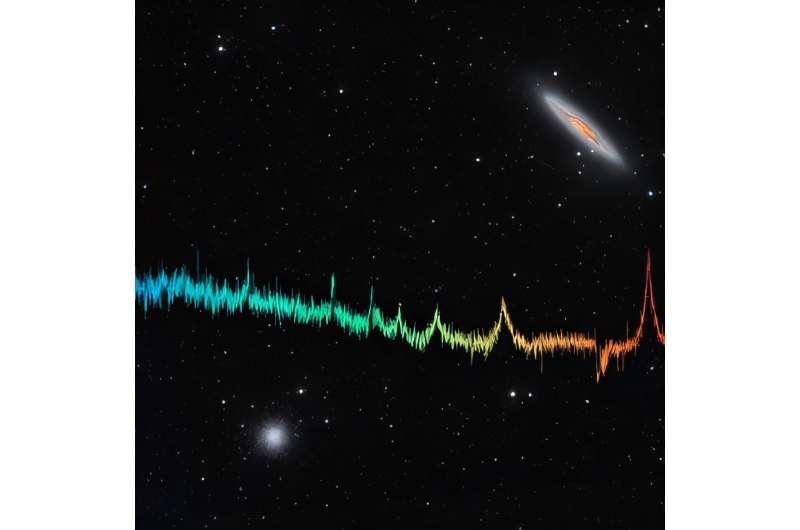On October 18, 2025, the 4-meter Multi-Object Spectroscopic Telescope (4MOST) successfully captured its first light at the VISTA telescope located in the European Southern Observatory’s (ESO) Paranal Observatory in Chile. This significant achievement marks the beginning of the telescope’s scientific endeavors, enabling it to explore the universe in unprecedented detail.
4MOST is not just a traditional telescope; it possesses the unique capability to record spectra, which involves capturing light from celestial objects in various colors. This allows astronomers to simultaneously analyze the light of up to 2,400 celestial objects, breaking it down into 18,000 color components. Such detailed analysis will facilitate the study of the chemical composition and physical properties of these objects, leading to groundbreaking insights into the formation and evolution of stars, planets, galaxies, and black holes.
Innovative Design and Capabilities
Once fully operational, 4MOST will conduct extensive surveys of the southern sky, aiming to catalogue the temperatures, chemical compositions, and velocities of tens of millions of celestial entities. It is recognized as the largest multi-object spectroscopic survey facility in the southern hemisphere, renowned for its large field of view and the number of objects it can observe simultaneously.
Development of the facility began in 2010, with plans for it to operate for a minimum of 15 years. The Leibniz Institute for Astrophysics Potsdam (AIP) leads the 4MOST Consortium, overseeing the construction and scientific operation of the telescope. AIP has played a pivotal role in developing various components, including a wide field camera and an advanced guiding system featuring over 2,400 glass fibers, each as thin as a human hair.
4MOST’s Principal Investigator, Roelof de Jong, who heads the Milky Way section at AIP, expressed his excitement, stating, “It is incredible to see the first spectra from our new instrument. The data looks fantastic from the start and bodes well for all the different science projects we want to execute.”
Project Manager Joar Brynnel highlighted the significance of this milestone, noting, “It has been a wonderful achievement after more than a decade of intensive efforts.” He emphasized the exceptional performance of the facility, which exceeds initial expectations.
First Observations and Future Research
The initial observations conducted with 4MOST showcased its capabilities, including an examination of NGC 253, also known as the Sculptor or Silver Coin galaxy. This galaxy, discovered by Caroline Herschel in 1783, is located approximately 11.5 million light years away and is known for its active star formation. The observations also captured a super star cluster and various star types within NGC 253, illustrating the breadth of research possibilities.
In addition to NGC 253, 4MOST obtained spectra from more than 2,000 other celestial objects during its first 20-minute science observation. This included data on stars within the Milky Way, as well as distant galaxies up to 10 billion light years away, allowing scientists to analyze their distance, internal velocity, and star formation history.
The 4MOST science team comprises over 700 researchers from institutions worldwide. In its first five years, the facility will conduct 25 different science programs, with ten programs developed by consortium members and the remaining fifteen selected by an external committee of astronomers nominated by ESO. The multi-fiber technology of 4MOST enables simultaneous observations of varied scientific cases, enhancing its research potential.
Highlighted projects include investigations into the origin of chemical elements, the formation of the first stars, and the evolution of galaxies and black holes. The telescope will also contribute to understanding dark matter and dark energy, which are integral to the universe’s structure and expansion.
4MOST employs a sophisticated optical system, including a nearly 1-meter diameter camera lens that provides a field of view of 2.5 degrees, significantly larger than the moon. Every 10 to 20 minutes, the telescope will observe a new set of objects, utilizing a fiber positioner that can switch targets in under two minutes.
As the data collected by 4MOST is analyzed, it will be transferred to the 4MOST data center at the University of Cambridge and subsequently archived at AIP and ESO for distribution among the scientific community. With its innovative design and ambitious research goals, 4MOST is poised to make significant contributions to our understanding of the universe in the years to come.
